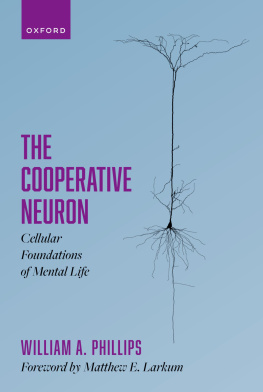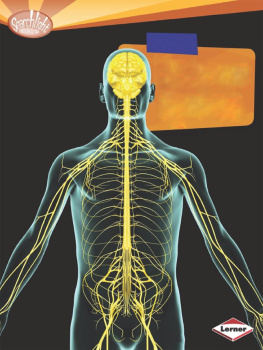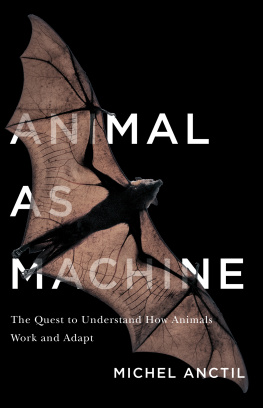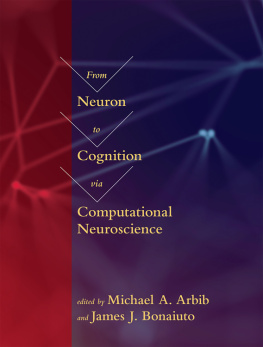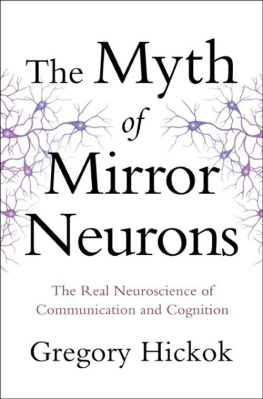DAWN OF THE NEURON
DAWN OF THE NEURON
The Early Struggles to Trace the Origin
of Nervous Systems
MICHEL ANCTIL

McGill-Queens University Press 2015
ISBN 978-0-7735-4571-7 (cloth)
ISBN 978-0-7735-9732-7 (ePDF)
ISBN 978-0-7735-9733-4 (ePUB)
Legal deposit third quarter 2015
Bibliothque nationale du Qubec
Printed in Canada on acid-free paper
McGill-Queens University Press acknowledges the support of the Canada Council for the Arts for our publishing program. We also acknowledge the financial support of the Government of Canada through the Canada Book Fund for our publishing activities.
Library and Archives Canada Cataloguing in Publication
Anctil, Michel, 1945, author
Dawn of the neuron : the early struggles to trace the origin of nervous systems / Michel Anctil.
Includes bibliographical references and index.
Issued in print and electronic formats.
ISBN 978-0-7735-4571-7 (bound).
ISBN 978-0-7735-9732-7 (ePDF).
ISBN 978-0-7735-9733-4 (ePUB)
1. Nervous system. 2. Neurophysiology History.
3. Neuroanatomy History. 4. Neurons History. I. Title.
QP353.A53 2015611.809C2015-903831-6
C2015-903832-4
Set in 9.5/13.5 Baskerville 10 Pro
Book design & typesetting by Garet Markvoort, zijn digital
CONTENTS
Louis Agassiz and the First Description
of Jellyfish Neurons
German Zoologists and the Rediscovery
of Nerves in Jellyfish
The Experimental Approach to Jellyfish Neurobiology:
George Romanes and Theodor Eimer
George H. Parker and the Broad View of the
Elementary Nervous System
Emil Bozler and the Rise of the
Comparative Physiologists
ACKNOWLEDGMENTS
Much of the information that has found ts way into this book comes from scholarly publications, but invaluable information on the personalities depicted in the book came also from Internet sources. Visiting archival sources on the Internet rather than in their physical locations has increasingly become the norm for scholars in recent times. I am especially indebted in this regard to Donald R. Forsdyke, professor emeritus at Queens University, Kingston, Ontario, for the material related to George Romanes that he collected and made available on his website. Other sources are available only at their physical locations, an example being the George Parker papers at the Harvard University Archives. Their reference desk at the Pusey Library was very helpful. Other material connected with George Parker was located at the Ernst Mayr Library of Harvards Museum of Comparative Zoology, and my gratitude goes to Dana Fisher and Mary Sears, who greatly facilitated my research there. Being unable to travel to locations such as the Wellcome Library in London, England, for the collected papers of Edward Sharpey-Schafer, I was grateful to Professor Richard D. French of the University of Ottawa for providing information going back to his visit there for his own research in the 1970s. I am also indebted to Professor French for the inspiration that his papers on Romaness jellyfish work and on Darwin and the physiologists gave me for the genesis of this book.
I thank the three anonymous reviewers of my manuscript, who provided numerous insightful comments and suggestions that greatly improved the scholarly quality of the book. For marked improvements in style, consistency, and narrative flow I am indebted to my copy editor, Jane McWhinney. And, last but not least, I am grateful to Jacqueline Mason, my editor at McGill-Queens University Press, who believed in my project from the start, guided me, and encouraged me throughout the process in my moments of doubt.
PREFACE
When I began exploring the nervous systems of coelenterate animals in the early 1980s, I was motivated by the consensus at the time that such animals represented the earliest extant forms in possession of a nervous system. It was then thought that detailed knowledge of the organization and function of these nervous systems would provide a basis on which to construct theories on the earliest rudiment of a nervous system, which had presumably emerged in some ancestral form preceding coelenterates. However, like many of my colleagues engaged in this type of research, I tended to refrain from runaway speculations, restricting myself to short concluding statements about the possible evolutionary implications of my findings. The thought of constructing a theory of how nervous systems came into existence, although attractive at first, yielded to the humbling realization that such constructs could not have any sound foundation, as footprints of nervous system emergence are missing from the paleontological record.
But my fascination with this question persisted. Over the years I assembled, little by little, a collection of original papers and monographs by the pioneer zoologists who had examined coelenterate nervous systems, reaching back to the middle of the nineteenth century. In recent years I studied the texts by historians of biology that mentioned prominent figures in the field, and attempted to provide contexts to their works. And now, after the closure of my academic career, I have been able to dedicate time to the question more directly in its historical perspective.
As I went about structuring this book, it seemed inevitable that I would need to pursue two aims at once. On the one hand I envisaged a chronicle of the research activities on the topic, from the earliest efforts in the nineteenth century to those of the modern era, peppering them with cameo portraits of the pioneer zoologists who did the researches, insofar as details could be gleaned from the available documents. On the other, I had to thread my way through the chronology of scientific contributions to highlight the ideas of some of these pioneers on the origin of nervous systems, as demonstrated in their own work and that of others, and to show how these ideas evolved with time and with the ever-increasing sophistication of scientific methods.
This book traces through history the work of zoologists who were curious about the way nervous systems first came about, through their investigations of living metazoans that possess the most basic neural elements. It is not about how nervous systems evolved further from the template design seen in coelenterates, as in higher invertebrates and in vertebrate animals; that would require writing another book. I focus rather on research activities centred on animals presumed to possess the likeness of the earliest nervous systems, and on the drive on the part of researchers to generate hypotheses about the process by which nerve cells first entered the animal world. It is all about origins, a quest as old as humanity, which begat the Bible and Darwins On the Origin of Species. It is about the yearning to understand the origins of a structure that foreshadowed the organ responsible for much of the evolutionary success of higher animals the brain.
It is now universally accepted that nerve cells are fundamental to the architecture and functioning of the brain. My first chapter narrates how cell theory led to this recognition. This clue, in turn, helped zoologists in pursuit of origins to turn their attention to nerve cells. But it is easy to forget that between the first observations of the brain as an organ in ancient times and the discovery of nerve cells, over two millennia had elapsed.
The awareness that the human brain is the seat of perception, motor control, and thought was recorded in antiquity, especially in the last few centuries BCE during the Hellenistic period of Greek Enlightenment. While the ancients, and later scholars of the Renaissance Period, came to recognize by dissection that animals also possess a brain, the significance of comparative anatomical descriptions did not sink in until Darwins theory of descent by natural selection cast the subject in an evolutionary framework, as noted by Georg Striedter (2005) in his masterly essay on brain evolution. However, even then the focus was not so much the origin of brains as their evolution in a narrow sense; that is, the transition from the brains of lower vertebrates to those of mammals and the transition from the nonhuman primates to the human brain.
Next page

